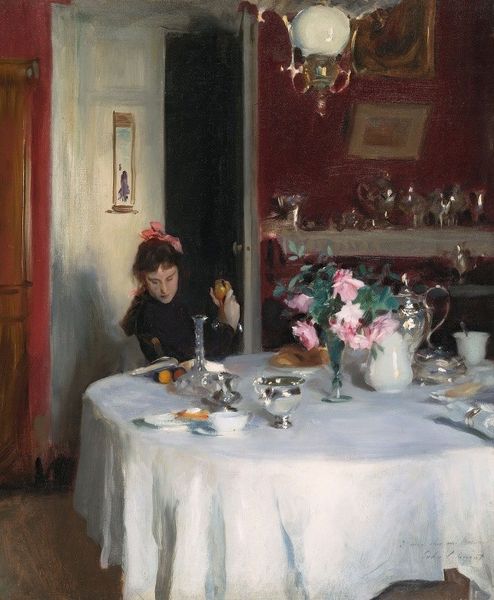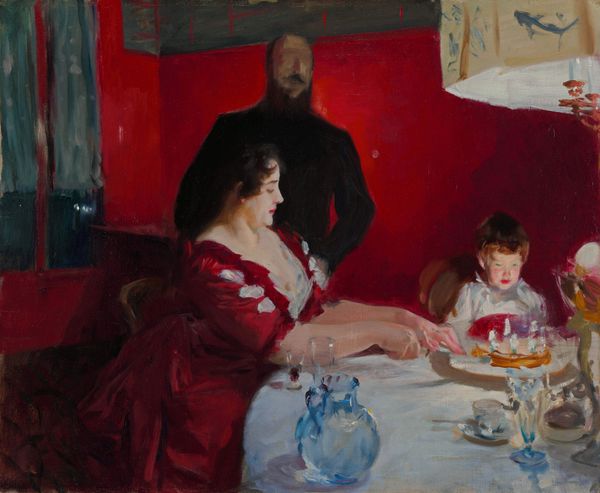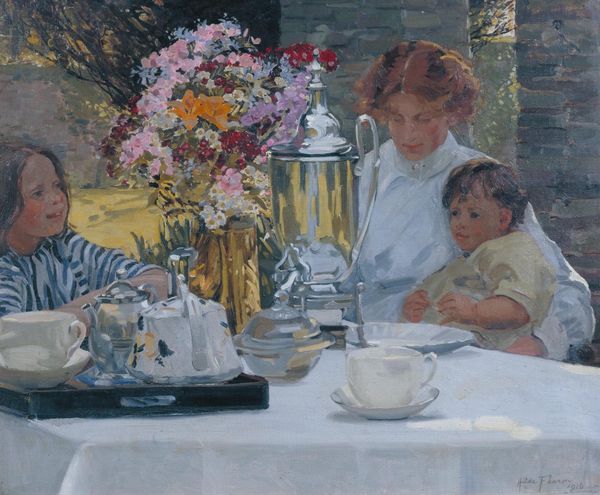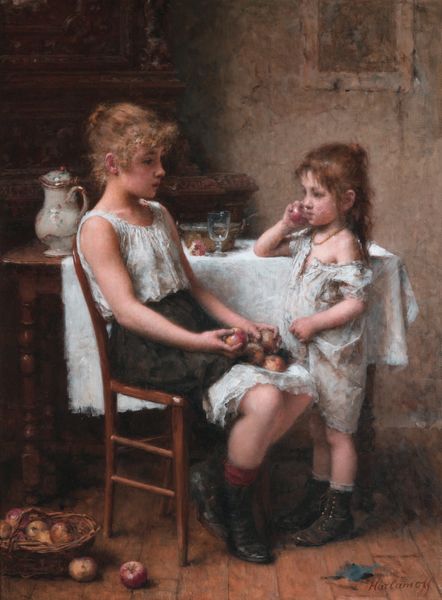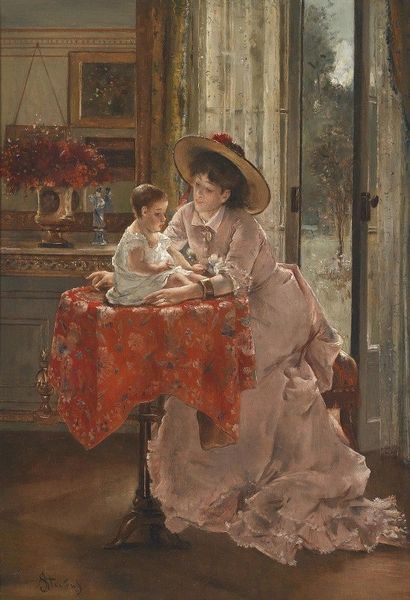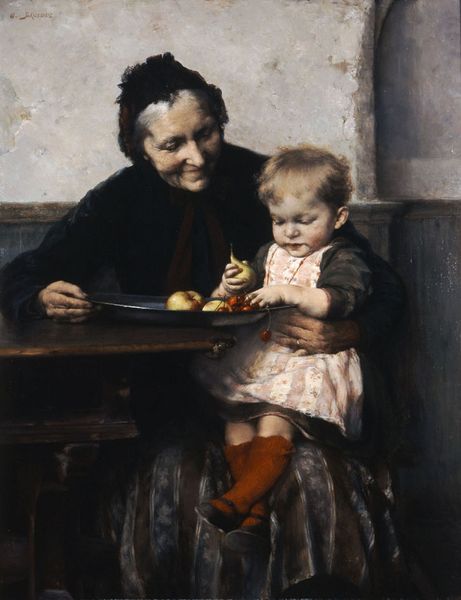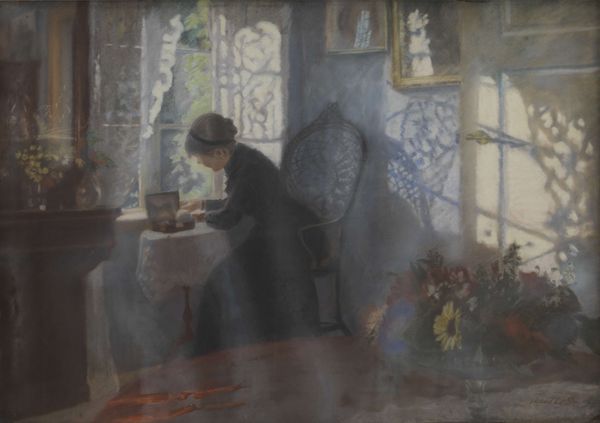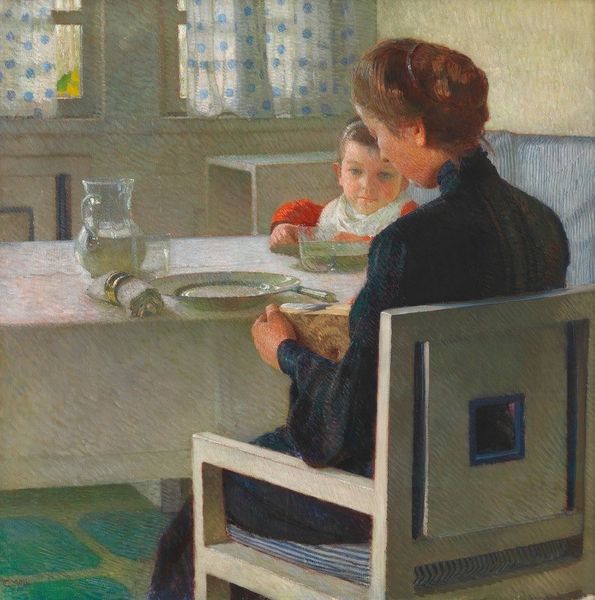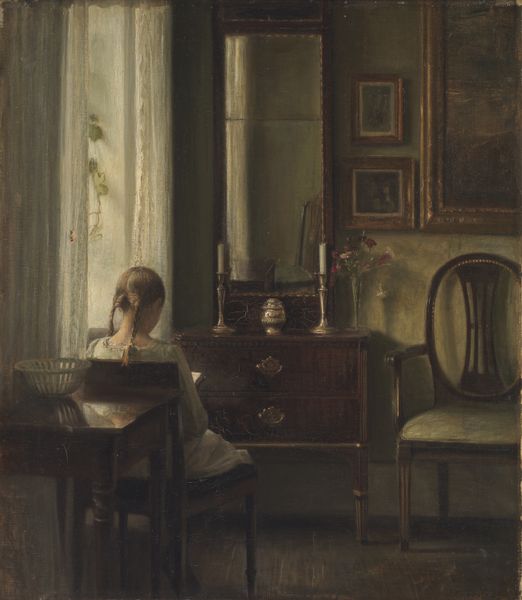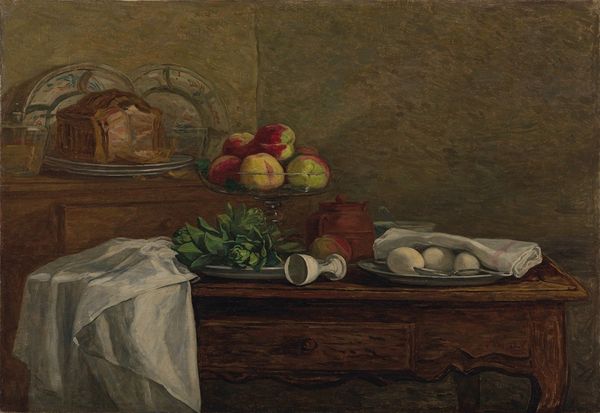
Copyright: Public domain
Curator: The artwork we are looking at is titled "Breakfast for Three", an oil painting by Charles Courtney Curran, completed in 1909. Editor: It’s quite a subdued scene, isn't it? Almost sepia-toned. The light is focused on the subjects at the table, drawing your eye to their interaction, or lack thereof. Curator: It captures a specific domestic scene, a bourgeois family perhaps, frozen in a moment of genteel leisure. We can consider the materiality of the table setting: fine china, crystal glassware, ripe fruit displayed for consumption, and what they tell us about class and social status. Editor: Yes, the material details speak volumes. But the composition itself is what strikes me. Curran employs a somewhat muted palette. The brushwork feels deliberately soft, which contributes to a dreamy, almost nostalgic atmosphere. I notice the almost symmetrical arrangement of the mother and daughter framing the laden table, anchored by the darker tones of the background. Curator: And the absence of the father? Or is that a brother to the child? The power dynamics within the domestic sphere were inherently imbalanced. Consider Curran's artistic labor within the context of art market trends in the early 20th century. He created images that resonated with a growing middle class eager to project aspirations of refinement and comfort. Editor: You bring up fascinating points about socioeconomics, yet I wonder about the personal symbolism. The rose pinned on the woman's dress, is it symbolic of beauty, or a memento mori? How about that downward gaze, suggestive of some interior state? These subtle visual cues enrich the artwork's potential interpretations. Curator: I see the rose more as a marker of aspirational gentility. The figures feel posed. It underscores a desire for representation, one filtered through a constructed sense of propriety, intended for the consumption and display. Editor: Ultimately, it is these competing narratives—the social realities of the time, woven with Curran's aesthetic choices and subtle emotional expressions—that make this piece so intriguing. Curator: I agree. Curran's "Breakfast for Three" not only offers a glimpse into early 20th-century domestic life but also invites us to interrogate the dynamics of class, consumption, and artistic production that shaped its creation.
Comments
No comments
Be the first to comment and join the conversation on the ultimate creative platform.
